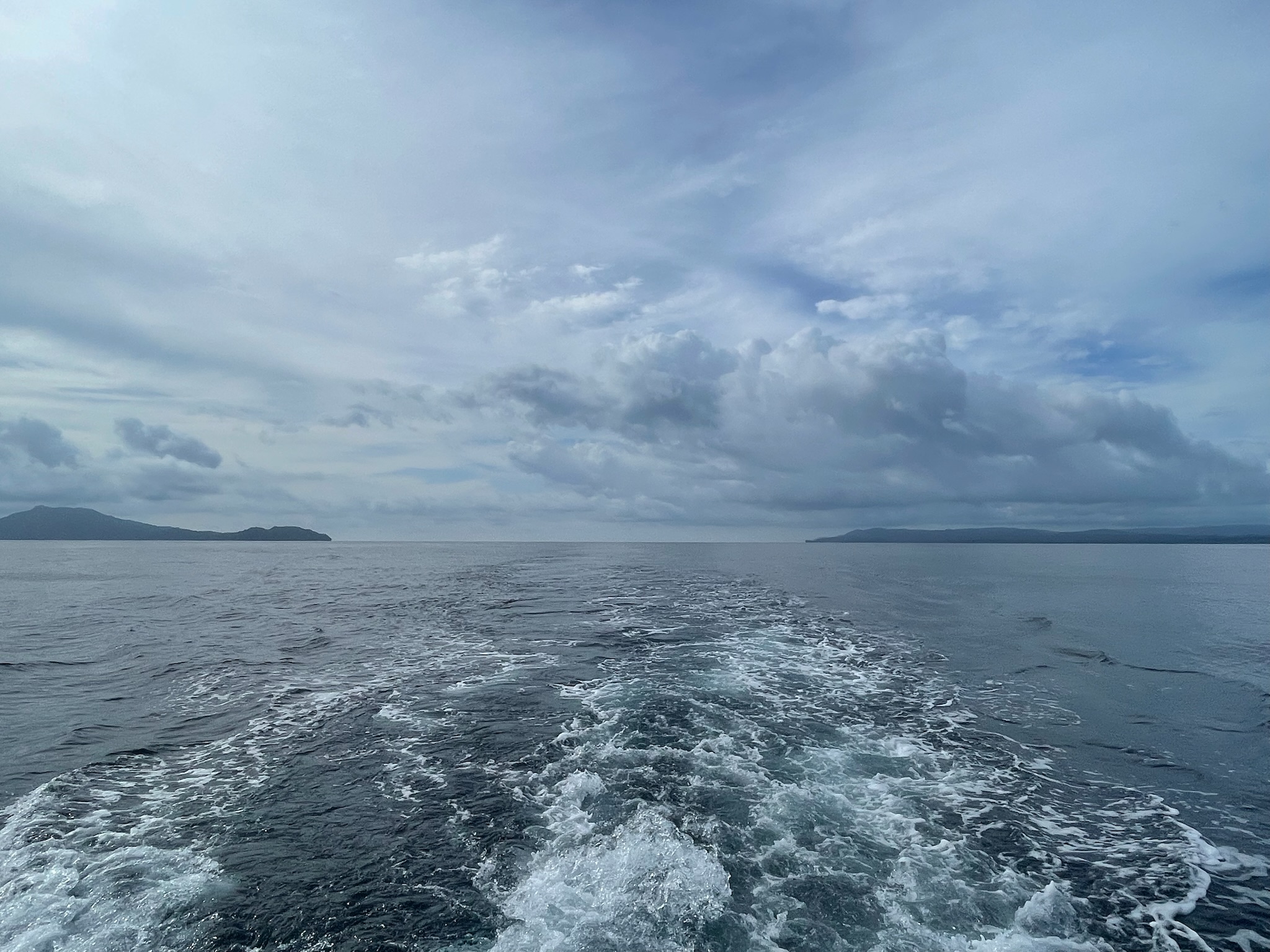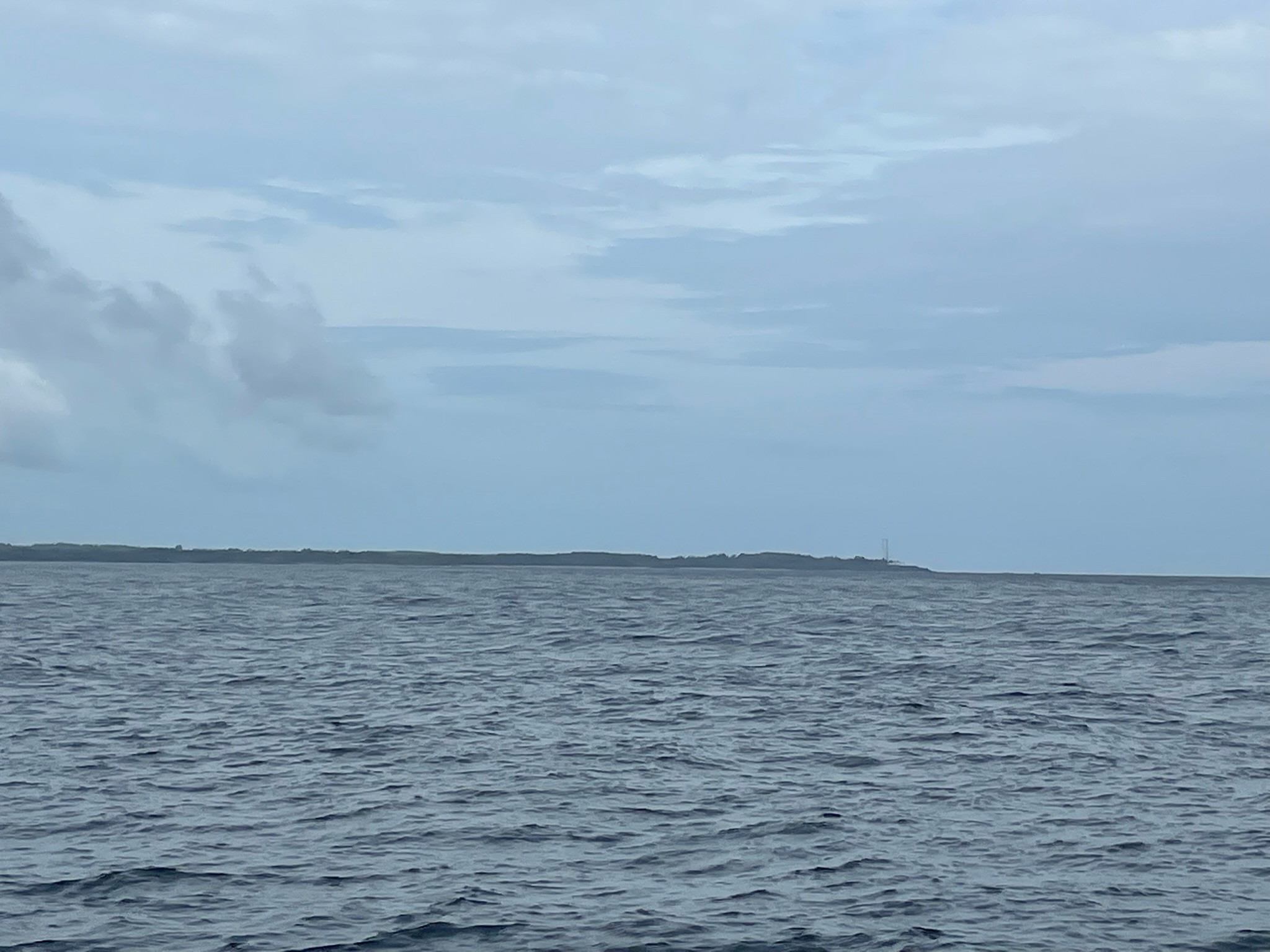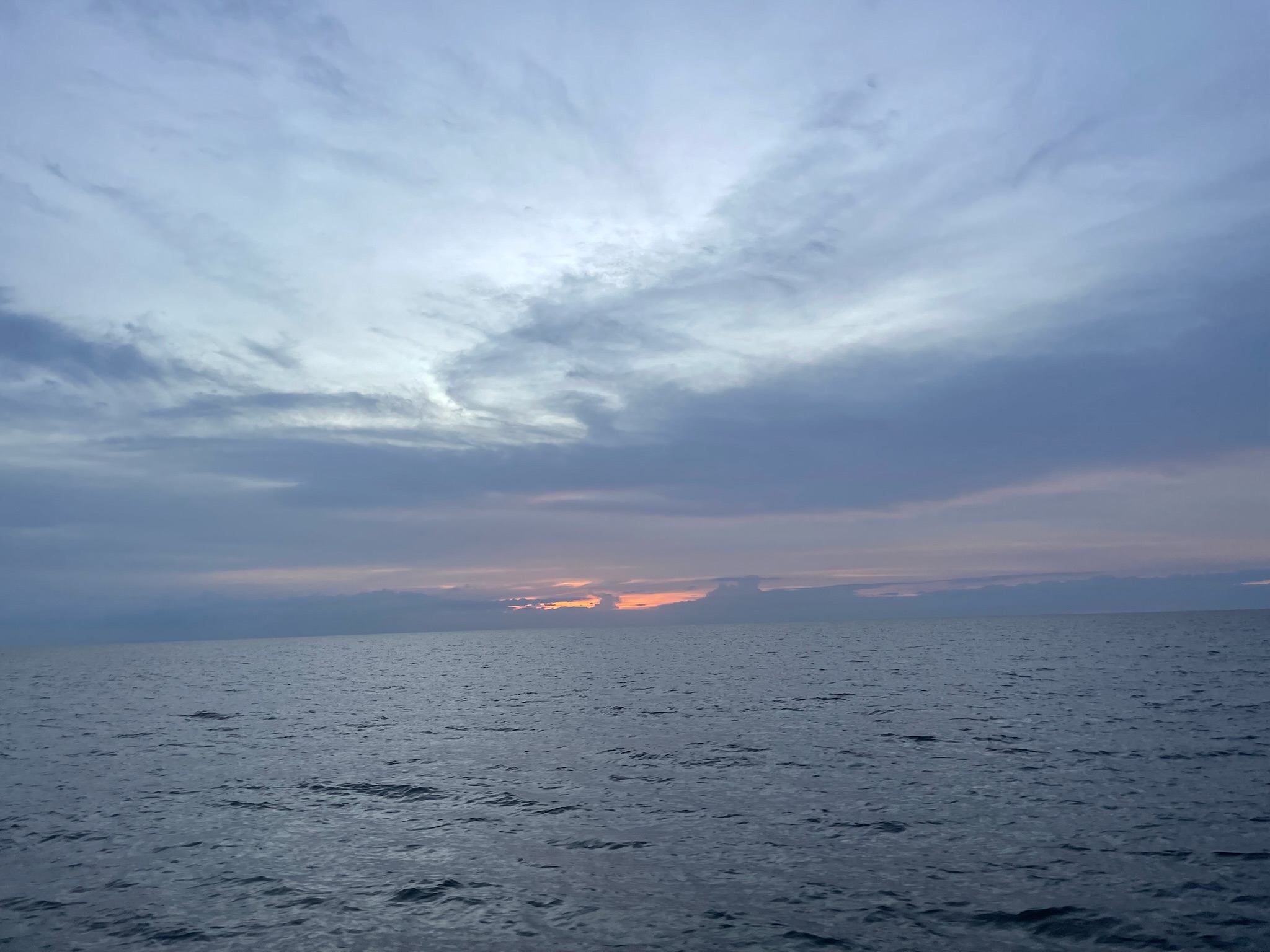Thursday, January 9 — It was another ominously grey day with light wind. The lack of wind made it very hot outside, so we again ran the AC. There was very little wind chop, but the swell had increased in the wee hours of the morning to 3 – 6 feet from our port side at relatively fast intervals, so it was a bit rolly. In the late morning/early afternoon, we went through a pass between two islands, which gave us a little reprieve from the swells.

The conditions varied throughout the afternoon and evening, but overall, conditions were pretty good. Eric saw some dolphins and Keith saw a turtle. And, we saw lots of birds.
The moon was ¾ full and brilliant when it poked out through the clouds. But except for the occasional glimpses of moonlight, it was another dark night.
In the morning (Friday), we neared Punta Mala, which is notorious for being rough.

We were going through at an unusually calm time, and it was still uncomfortable with 2 – 5 foot following seas at rapid intervals which combined with 2 – 3 foot head seas and strong head wind as we rounded Punta Mala. It was a lurchy, lumpy ride. We’d expected conditions to improve after we rounded the point, but they didn’t.
We’d forgotten to mention that for the majority of the passage, we’d had a current with us and were making excellent time, averaging in the mid-6-knot range. We knew that when we got to the Gulf of Papagayo and near Punta Mala, we’d hit adverse currents that would drastically slow us down. But both times, the current wasn’t as bad as we’d anticipated, and now we were on track to enter Panama City in the dark, which makes things more difficult.
So instead of having us take the shortest route, Eric changed course to run close to shore for better protection from the wind waves and swell. This added miles, which was actually a good thing because we didn’t want to arrive in the dark. He also lowered the RPM to 1500.
We were running parallel to the shore, about 1.5 miles out in 35 – 40 feet of water. While it was better close to shore than it had been farther out, it was still uncomfortable. And, since it was only 83-degrees Fahrenheit and windy, we didn’t run the AC, which added to the discomfort. The sunset was again blocked by the heavy clouds

This stretch of water turned out to be a popular fishing ground. Between 1900 and 2100, we encountered about 10 fishing boats. None had AIS, but were well-lit with signals indicating trawling fishing. They had trawling nets out, and were doing circles and zig zags. There were also about 7 – 8 markers with dim flashing strobe lights, which were hard to see until about 0.25nm away. Eric wasn’t sure what the strobe lights were for, and later found out they were small fishing pangas. It took several course changes to avoid the fishing boats and the strobe light markers. Also, at one point, a random panga zipped by within 100 feet of us. Fortunately, the moon was close to full. Despite being obscured by clouds most of the time, there was still enough light to make navigating around the boats/strobe lights a little less scary.
Around midnight, Eric realized we were still set to come into Panama City in the dark, so he lowered the RPM down to 1400. Despite the fact that we’d slowed down to 1400 RPM, and despite the fact that we had added miles to our route, we’d still made better time than expected. At 0400, we approached the anchorage for the large boats coming from/going to the Panama Canal. We could have done circles for two hours until dawn broke, but since the ships were not moving, were lit, and all had AIS, we were confident that we could navigate safely.
To be continued…
